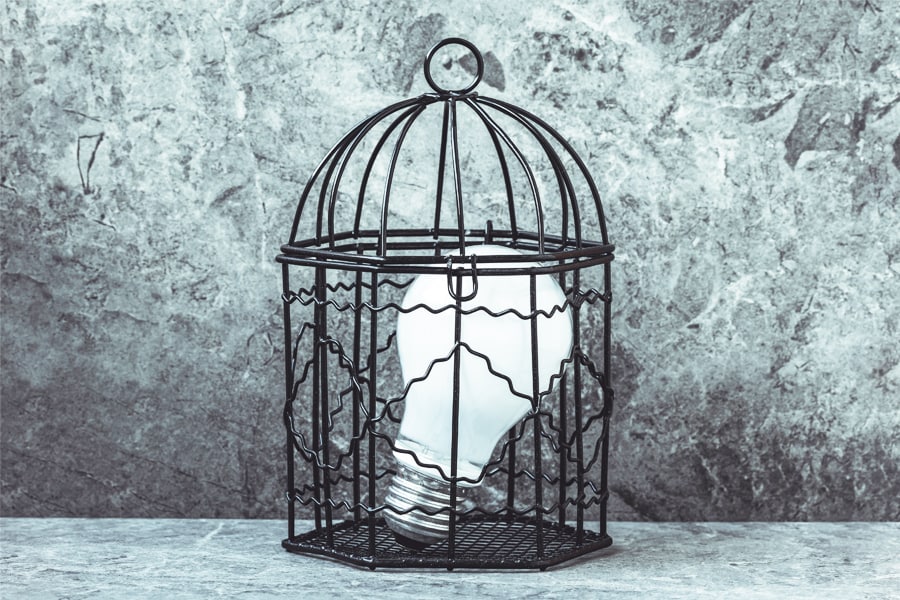
The difficulty of being innovative
While it is hard to innovate successfully in the first place, it is harder still to continue innovating successfully. But proper planning and execution can become the keys to sustained innovation
 While it is hard to innovate successfully in the first place, it is harder still to con-tinue innovating successfully.
Image: Shutterstock
While it is hard to innovate successfully in the first place, it is harder still to con-tinue innovating successfully.
Image: Shutterstock
Innovation is among the top three priorities for three-quarters of the compa-nies surveyed by BCG in 2021. However, only half of them have been able to take any definitive steps towards it, highlighting what is called the readiness gap in the industry. While a lot has been discussed, debated, and documented about the ways to achieve that elusive elixir of growth that is innovation—from fostering creativity to celebrating failures to supporting open culture—little has been said about the difficulty of being innovative.
Uncertainty mires innovation
Innovation, by its very definition, involves ideation, exploration, and experi-mentation, which are inherently risky and prone to failure. It is well-documented that 9 out of 10 startups—the most agile, innovative enterprises in the market—fail within the first five years of their inception. However, the problem is more pervasive and not limited just to startups. For example, in the past five years, Google has killed more than 120 projects, including some of the popular ones such as the social media platform Google+, the messaging app Al-lo, the mobile payments app Tez, and the music streaming app Google Play Music. Microsoft, on the other hand, scrapped more than 30 projects in that same duration. Despite being among the top ten innovative companies in the world with access to the best resources and skills available. The fact that so many of their projects failed further highlights the uncertainty that pervades the innovation space. This reinforces the idea that innovation is hard while highlighting the underlying difficulty of being innovative.The difficulty of being innovative
While it is hard to innovate successfully in the first place, it is harder still to con-tinue innovating successfully. Unlike physical assets, innovation is not a one-time acquisition and requires constant nurturing, which gets progressively costlier as the firm grows. For example, the amount that Google spends on R&D as a percentage of total revenue has doubled in the last five years, a ma-jor part of which is accounted for by the ongoing talent wars to hire the best talents on the market. Hiring the right talent is essential to drive innovation as, in the words of Harvard professor Gary Pisano, it ensures that the failures en route are not out of incompetence and hence can become opportunities to learn and celebrate.Moreover, successful innovation attracts increased attention and hence scruti-ny, which further limits the agility of the firm. For example, Meta’s (formerly Facebook) legal-related accruals in 2021 have increased by about 100 percent over last year. While accountability is an absolute must, increased scrutiny and hence litigation can limit the pace and scope of innovation. This elevated insti-tutional oversight is increasingly becoming an active consideration for emerg-ing startups and unicorns alike, especially in the wake of cases such as Theranos. The recent IPO debacle wherein Paytm lost more than 27 percent of its value on the very first day of its trading, has further added to the growing distrust among stakeholders. It results in the push for stricter security regula-tions by academics and legislators alike—the phenomenon is beautifully cap-tured in the term unicorniphobia coined by Alexander Patt, professor of law at Kansas University.
Sustained innovation
Successful innovation is the key for any business to stay relevant. However, the question is how to sustain innovation while making sure that the process itself does not compromise profitability. While the difficulties associated with being innovative cannot entirely be eliminated, they can be mitigated to achieve sus-tained, long-term innovation. The following are three suggestions that together can make innovation more efficient:[This article has been reproduced with permission from the Indian School of Business, India]







